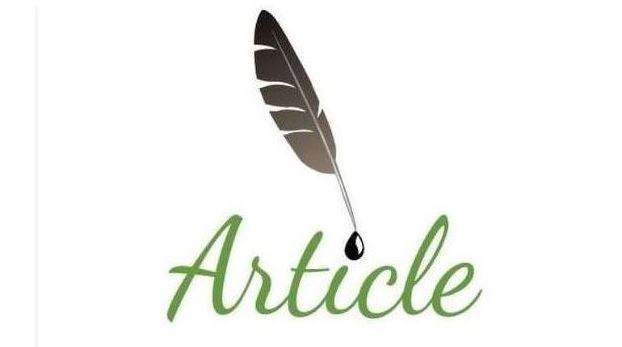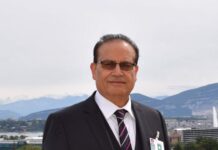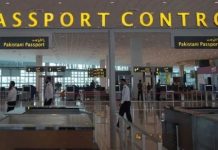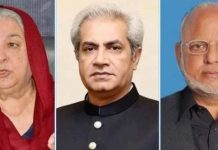Rashad Bukhari
Incidents of violence and killings continued unabated in the newly merged tribal districts of Khyber Pakhtunkhwa province amid the ongoing negotiations with the Tehreek –e- Taliban Pakistan (TTP) for a truce facilitated by the Afghan Taliban. It was hoped that through these negotiations, TTP would be willing to lay down its arms and mainstream in the society to create peace and stability in the region and the country. TTP, however, is adamant in its demand for the reversal of the merger of the tribal districts, something unacceptable for the government. The instability and uncertainty of the region require immediate attention and engagement.
In 2018, Pakistan’s National Assembly passed the Federally Administered Tribal Areas (FATA) Reforms Bill, which merged FATA with the adjacent Khyber Pakhtunkhwa province. This led to the creation of district-based administration bodies within the respective NMDs (Newly Merged Districts). This was followed by the Khyber Pakhtunkhwa (KP) Sustainable Development Strategy (2019-2023) focused on making the newly merged KP Province into a secure, economically vibrant, and prosperous society. Despite these efforts, these districts have continued to witness acts of violent extremism that have taken the lives of both civilians and security forces.
Government can’t alone do all the work to develop the region after the merger without ensuring support from the local communities, different stakeholders, and other non-government organizations. Support from neutral and internationally recognized bodies with their technical resources must be welcome. It is very challenging for any organization, local or international, to work freely and effectively in that region due to acute poverty, underdevelopment, illiteracy, continued militancy, and state prohibitions nonetheless. Despite these challenges, a few courageous and resourceful organizations contribute their bit for stability through awareness raising, capacity building, and development projects with some laudable impact.
UN’s International Organization for Migration (IOM) is working through its Community Resilience Activity North (CRA-N) project towards building community resilience through workshops and other interventions to support the transition and rehabilitation efforts in these Newly Merged Districts.
The project focuses on reducing marginalization and exclusion amongst remote border communities most vulnerable to violent extremist (VE) influence where resilience is lacking. CRA-N promotes cohesion within and between communities that are at risk, particularly those with ethnic or sectarian identities which have previously been exploited by violent extremist organizations (VEOs). CRA-N promotes engagement between segments of society, increasing social bonds, strengthening a sense of belonging and purpose, and increasing civic engagement, particularly amongst the youth.
Local government and community leadership systems struggle with violence, inter-communal conflict, and religious intolerance. CRA-N is aware of how inequalities in access to information, public services, economic opportunities, and resources may lead communities to embrace extreme ideologies based on their grievances of systemic inequities.
CRA-N works with government and local partners in an inclusive, participatory approach to address identified drivers of extremism and instability in these remote NMDs. Interventions are demand-driven, adaptive, and multi-sectorial. Activities include civic awareness and engagement, youth and women empowerment, community cohesion and cultural development, skills training, livelihood development, and small-scale infrastructure rehabilitation. The activities are implemented in close coordination with the Provincial Government’s Planning & Development Department, Deputy Commissioners, and District Government Authorities to ensure a coordinated and consistent approach to GOP priority efforts.
These workshops were designed to enable diverse local stakeholders to identify and pilot innovative approaches to improve community resilience to instability and other stressors like violence, intolerance, and conflicts. Three overarching objectives of the project include: 1) increasing civic engagement of the community members, 2) enhancing inter and intra-community cohesion efforts, and 3) addressing the current challenges faced by formerly Temporarily Displaced Populations in their efforts to reintegrate within their communities.
To quote only one example of the kind of impact made through capacity building of local leaders, CRA-N is also providing training in Alternative Dispute Resolution to local ADR committee members to help resolve disputes locally.
After the training, these members find themselves in a better position to promote peace and play an active role in supporting Government efforts to mobilize resources to address tensions and disputes between communities and tribes. Some of these members are also involved in conflict resolution regarding ongoing communal issues. After the training, Peace Committee members resolved a land settlement issue between the Makhazia tribe of Lower Kurram and the Lalamai tribe of Center Kurram. They convinced both communities to avoid violence and submit their case to a court of law, to which both parties agreed.
The importance of engaging youth in productive activities like skill training, sports, and arts in the tribal areas can never be over-emphasized. Activities that bring people of different tribes and sects together and increase inter-tribal and inter-sectarian interaction are required. They needed to strengthen the positive characteristics of their community and weaken the negative things so that the society could become more resilient and would not fall prey to the culprits’ propaganda again. Society should be able to adapt to new situations, strengthening its strong points, and addressing its weaknesses, while keeping its identity intact.
The writer is a consultant and researcher working on social issues, including building resilience and cohesion in stressed communities.

















